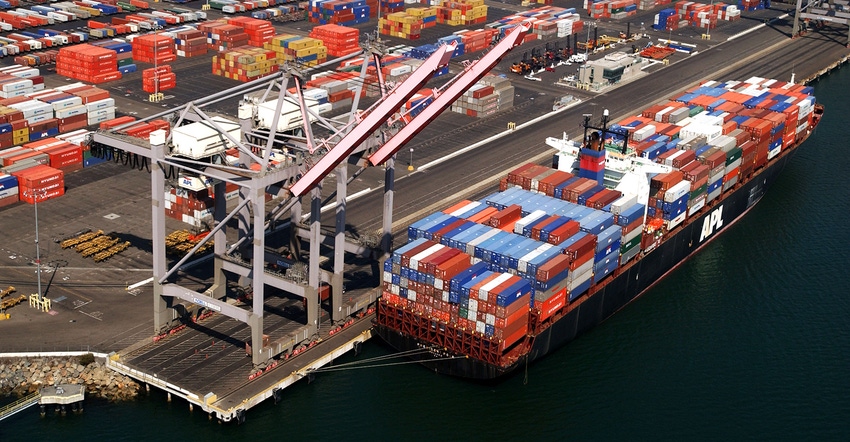
The late President Dwight Eisenhower had a sign in his office on his farm in Gettysburg, Pa., that said: “Farming looks mighty easy when your plow is a pencil, and you're a thousand miles from the corn field.”
The same might soon be said about trade negotiations, a subject that could play an increasingly important role in whether U.S. farmers are able to enjoy higher prices for their crops in the near future.
Numerous times during the 2016 campaign candidate Donald Trump talked about slapping tariffs on imports of Chinese goods if the People’s Republic of China didn’t start giving us a better deal. (Apparently, those threats didn’t apply to the other China, the Republic of China on the island of Taiwan.)
Then, President-elect Trump named Peter Navarro, author of the book, “Death by China,” and a frequent critic of China’s economic policies, to head the newly formed White House National Trade Council, removing any doubts that he intends to take a tough stance on relations with China.
As reported in the New York Times article announcing the appointment, “Mr. Navarro has said that China is effectively waging an economic war by subsidizing exports to the United States and impeding imports from it. Mr. Trump has described this as ‘the greatest theft in the history of the world.’”
The Chinese government (People’s Republic) has taken note of the Novarro appointment and the president-elect’s repeated threats of tariff increases and is already considering how it would retaliate. (The U.S. currently has tariffs of 2.5 and 2.9 percent on Chinese goods.)
The two primary targets, according to reports: Boeing Aircraft and U.S. farm exports from Midwestern states. Why pick on the latter? Because those are the states that voted for Trump and, ostensibly, could be counted on to respond the loudest if China stopped buying U.S. soybeans.
The problem is, as commodity analyst Arlan Suderman noted in a speech to the Agricultural Council of Arkansas in mid-December, is that no one knows what to expect from the president-elect. “The theories are, one, he’s positioning for negotiations, and we’ll end up with better trade. The other is that’s what he really wants to do – have a trade war. Where will we end up? That is still the unknown as we go forward.”
(Reports say the Trump transition team has been circulating a proposal for a 5 percent tariff on imports, although its members have been warned such a move would put a damper on economic growth right out of the starting gate.)
In a speech at the USA Rice Outlook Conference a few days before, Richard Brock, owner of Brock Associates, said he could see U.S. soybean prices falling to $6 to $7 a bushel, in part, because of the fallout from trade difficulties with China.
That’s a possibility that makes risking a trade war with China a very high stakes gamble.
About the Author(s)
You May Also Like






